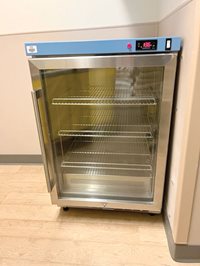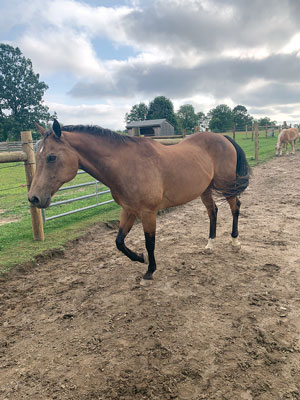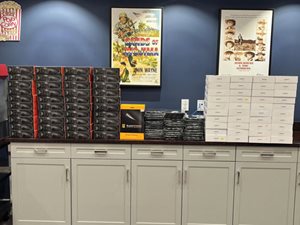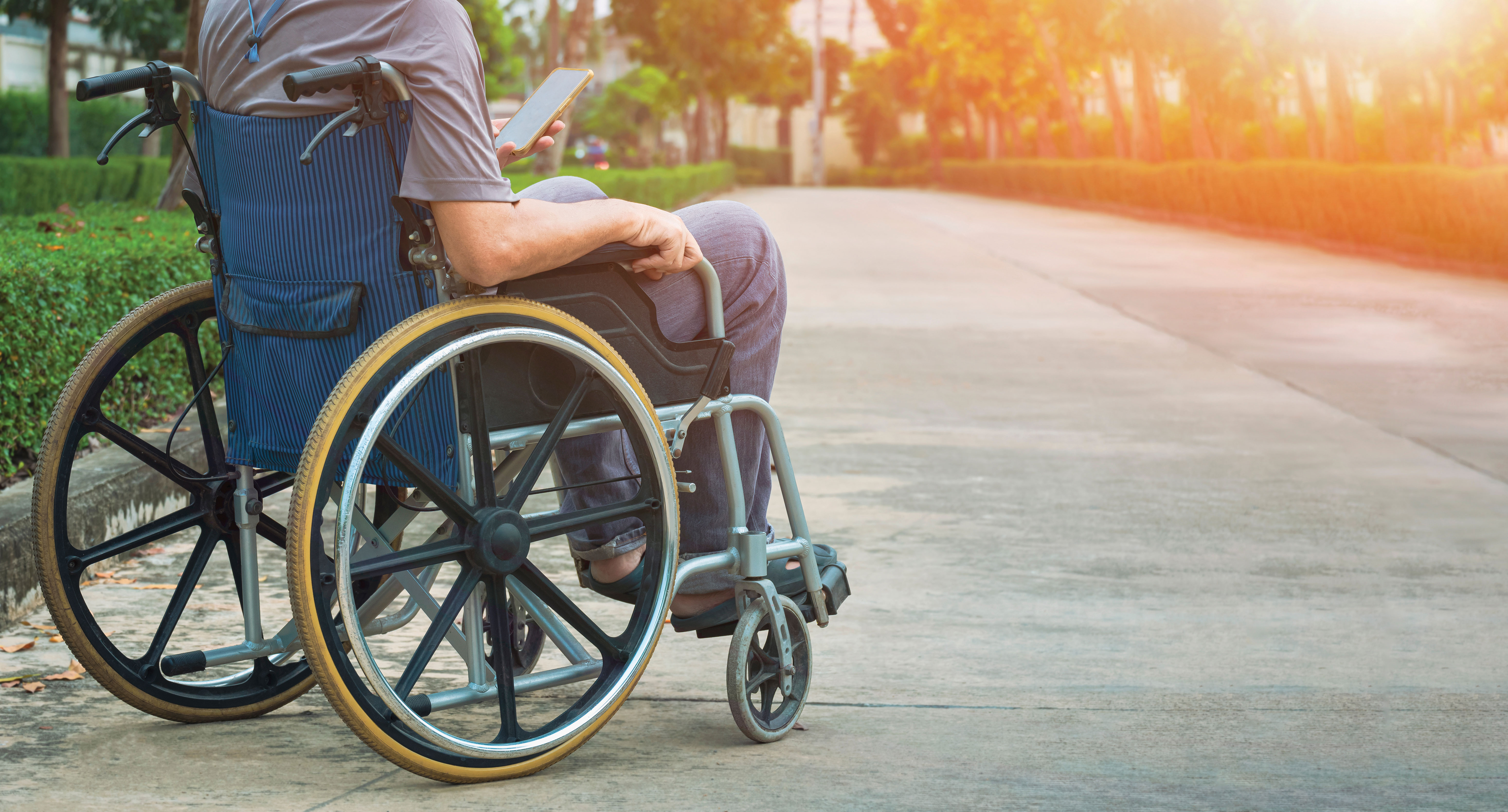By Jennifer Donovan
An easy way of giving back to our mission
American Legion Auxiliary members are known for supporting our veterans. Serving our nation’s veterans is not a one-size-fits-all approach. Veterans’ needs can vary from community to community. ALA members are great at finding solutions to those needs.
Unfortunately, sometimes the cost of the solution may seem out of reach. That’s where the American Legion Auxiliary Foundation can help. Units and departments that have found a need in their community can get assistance meeting that need by applying for a Veteran Projects Fund grant to help assist with the cost of the project.
The Foundation awards grants up to $10,000 to units and departments addressing a new, one-time need for veterans in their community. The project can be done alone or in collaboration with another organization in the community. The applying ALA entity must fund at least 20% of the overall project cost, and the project needs to align with the ALA’s mission. For example, if the total cost of the project is $12,000, the ALA entity must fund $2,400 and the ALA Foundation will fund the remaining $9,600. If the ALA entity cannot fund 20% of the project, they can state their case in the application and the ALA Foundation Board of Directors will take it into consideration.
Do you have more than one project in mind that would qualify for a grant? Spread the projects out. Entities can apply for a grant once every 12 months if they see a need that meets the grant criteria. In other words, keep planning and keep applying!
“I would encourage other Auxiliary units to apply for the grant,” said Patti Purcell, Indiana ALA Unit 492. “We hope to apply for another grant too.” (Read ahead for more information about Unit 492’s grant project.)
PLAN A PROJECT
Now that you know about the grant, your unit/department may have one in mind or need inspiration. There are a few steps to take before applying:
- Identify the greatest needs in your community for veterans.
- Research what is needed to address those needs.
- Compile ideas on possible solutions.
- Make sure your ideas align with the ALA’s mission of supporting veterans, military, and their families.
- Determine the cost of the project.
- Make a plan.
“It’s easy to discuss doing things for veterans at the monthly meetings and walk out of there, and before you know it, it’s your next monthly meeting and nothing has transpired,” said Amy Wagner, Indiana ALA Unit 492. “Set reachable goals each month. We continuously look for ways to benefit our veterans not only at the Indiana Veterans Home, but in our community.”

ALA Unit 492 in Indiana received a Veteran Projects Fund grant that is helping provide comfort to veterans. They used the grant to purchase four blanket warming cabinets for the Indiana Veterans Home.
The idea came about when Auxiliary members learned residents were getting cold after being taken back to their room after showering. Warm blankets would help solve this problem. Staff at the veterans home told the Auxiliary they dreamed of having a cabinet on each of the four floors, but the cabinets were too expensive.
Unit and post members met with representatives from the Indiana Veterans Home to see how they could make the dream a reality. At that time, The American Legion Family members weren’t thinking about getting a grant to help.
“A few days later, in perfect, divine time, I got our
Auxiliary magazine and read an article about the grant program, which was the first time we had heard about it,” said Purcell. “I talked to our Auxiliary president and an idea was born.”
They decided they would apply for a grant for four warming blankets so each floor would have one.
“We had an Auxiliary member take this project by the horns and run with it and it paid off in the end,” said Wagner.
The blanket warmers have been well received by the veterans and staff. The blankets keep the residents warm and comfy, allowing for better sleep. The staff say the warm blankets are also helpful for those who are ill or have an injury.
HOW TO QUALIFY
Now that you have identified a need for a Veteran Projects Fund grant and made a plan, does it meet the criteria?
“Projects most likely to get approved are projects that impact multiple veterans and will continue to do so for a long time. Examples include bedroom furniture for a transitional housing facility, blanket warmers at a VA medical center, or a new barn for a horse used for equine therapy for veterans,” said Carley Schutz, ALA National Headquarters Development Division director. “The purpose of the VPF grants is to improve the lives of veterans and their families; the more lives we can improve, the better we can execute the mission of the Foundation.”
When deciding on a project, keep the following in mind:
- Applicant must be an ALA entity (unit, district/county, department).
- Be able to provide 20% of the project cost. The ALA Foundation will provide the other 80%, up to $10,000.
- One grant per grantee will be awarded in a 12-month period.
- Funds may not be used to reimburse expenses paid prior to grant approval.

“Go for it,” said Lydia DeGumbia, Connecticut ALA Unit 72. “It was well worth it just to see the results of what these grants give to the veterans and their families. It really warmed our hearts. The application was actually very easy to do. If anybody is looking to help veterans with a grant, they shouldn’t be afraid of doing it because it took me only a few minutes to do.”
DeGumbia’s unit chose a project that will allow veterans to participate in equine therapy.
Unit 72 is involved with the Shepard Meadows Equestrian Center that offers a program for veterans and their families at no cost. The unit has two horses they have adopted, Moses and Kentucky. The horses needed stalls, and the center was fundraising to build a new stable.
The unit decided to help the center by raising funds for a new stable and a bathing station for horses in the veterans therapy program. The new stable allows the horses to have a safer and drier place to live. Another benefit — veterans can still visit the horses even if it is raining.
So far, more than 25 veterans have participated in the veterans program.
“These veterans get up every day and look forward to going to the farm,” said DeGumbia.
In Maine, ALA Unit 132 identified a need for technology for residents at the Maine Veterans Home.

“During the pandemic, we became brutally aware that not being able to have access to the outside was affecting our veterans; having my mother hospitalized also during this time also gave me a bird’s-eye view of how technology would help,” said Stella Trahan, Unit 132 in Maine. “Many nurses, aides, and activity personnel started bringing in their tablets so patients could have face-to-face contact with their families.”
Unit 132 met with the activities department at the Maine Veterans Home to see what they could do to help. The unit decided they could raise money to buy a few tablets.
“We started to fundraise through word of mouth and letter writing to units throughout the state. It began slowly at first, but we were able to raise a sizable amount,” said Trahan. “After bringing this information to my unit, they wanted to know what else we could do, and if we could do more.”
Department of Maine Secretary Michelle McRae suggested they apply for a Veteran Projects Fund grant.
“The application was easy to fill out, and with the monies previously raised, we were able to purchase not only the original 10 tablets with headsets, cases, and screen protectors, but we could now purchase 40 of everything,” said Trahan. “Now, not only can our heroes at the MVH FaceTime their loved ones whenever they want to, they can also listen to audiobooks, watch movies, and play games.”
Residents are also participating in a program with area schools where students read to them. But Trahan said there are times when residents want to participate but don’t want to leave their room. The tablets allow them to join from their room and feel comfortable.
“It has improved their overall quality of life,” she said.
AFTER GRANTS ARE AWARDED
After you apply and receive the grant, you will have a few requirements to meet compliance standards. This includes grant reports, which will need to include a summary of the grant progress or outcome, photos of the project, media coverage, and financial reports. Members must return the reports within 30 days of the project’s completion.
American Legion Auxiliary National Headquarters wants to ensure your hard work gets noticed! You will receive assistance creating a press release on spreading the word to your local media outlets.
“If you have a question about whether your project qualifies or about the application, please ask,” said Schutz. “Email
ALAFoundation@ALAforVeterans.org or call the Development team. We are happy to answer any questions you have about your project. We want to do everything we can to help your unit, district, or department fund initiatives in your community where you see a direct need for a veteran.”
READY TO APPLY?
- Visit www.ALAFoundation.org
- Click on the grants tab and select Veteran Projects Fund
- Complete application and submit
DETAILS REQUIRED WHEN FILLING OUT THE APPLICATION:
- Information about your ALA entity
- Project description
- Amount desired
- Action steps
- Target completion dates
- Actual budget

 ALA Unit 492 in Indiana received a Veteran Projects Fund grant that is helping provide comfort to veterans. They used the grant to purchase four blanket warming cabinets for the Indiana Veterans Home.
ALA Unit 492 in Indiana received a Veteran Projects Fund grant that is helping provide comfort to veterans. They used the grant to purchase four blanket warming cabinets for the Indiana Veterans Home.  “Go for it,” said Lydia DeGumbia, Connecticut ALA Unit 72. “It was well worth it just to see the results of what these grants give to the veterans and their families. It really warmed our hearts. The application was actually very easy to do. If anybody is looking to help veterans with a grant, they shouldn’t be afraid of doing it because it took me only a few minutes to do.”
“Go for it,” said Lydia DeGumbia, Connecticut ALA Unit 72. “It was well worth it just to see the results of what these grants give to the veterans and their families. It really warmed our hearts. The application was actually very easy to do. If anybody is looking to help veterans with a grant, they shouldn’t be afraid of doing it because it took me only a few minutes to do.”  “During the pandemic, we became brutally aware that not being able to have access to the outside was affecting our veterans; having my mother hospitalized also during this time also gave me a bird’s-eye view of how technology would help,” said Stella Trahan, Unit 132 in Maine. “Many nurses, aides, and activity personnel started bringing in their tablets so patients could have face-to-face contact with their families.”
“During the pandemic, we became brutally aware that not being able to have access to the outside was affecting our veterans; having my mother hospitalized also during this time also gave me a bird’s-eye view of how technology would help,” said Stella Trahan, Unit 132 in Maine. “Many nurses, aides, and activity personnel started bringing in their tablets so patients could have face-to-face contact with their families.”